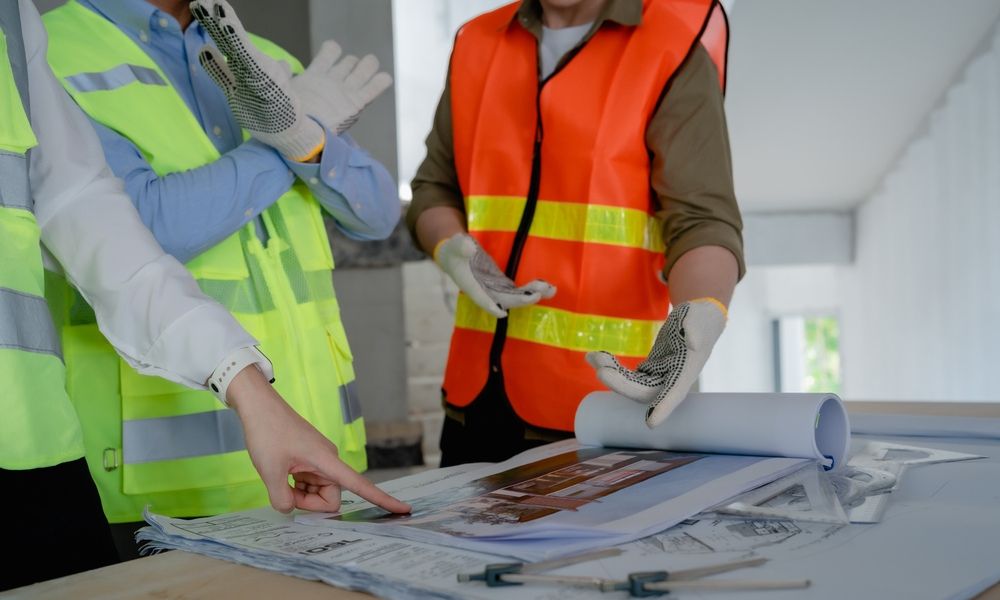Last updated on December 30th, 2024 at 10:06 am
Material takeoff is a crucial process in the construction industry, enabling contractors, estimators, and project managers to determine the quantities of materials needed to complete a project. Accurate material takeoffs not only help in budgeting but also minimize waste, ensuring a streamlined and cost-effective construction process. This guide will take you through each step of the material takeoff process, from understanding project plans to calculating quantities and using digital tools for efficiency.
What is Material Takeoff?
Material takeoff (MTO) is the process of listing and quantifying the materials needed for a construction project. This involves identifying all materials specified in project drawings and specifications, measuring them, and calculating quantities for ordering and budgeting.
A well-done material takeoff provides the foundation for cost estimation, project scheduling, and resource planning, making it an essential task for successful project management.
Why is Material Takeoff Important?
Material takeoff plays a vital role in construction projects for several reasons:
- Accurate Cost Estimation: Knowing exact material requirements helps estimators create precise budgets, ensuring that clients and contractors understand project costs.
- Efficient Resource Management: By understanding material needs in advance, project managers can schedule orders and avoid delays.
- Reduced Waste: Accurate material takeoffs minimize the risk of over-ordering, reducing waste and keeping costs under control.
Step-by-Step Guide to Performing a Material Takeoff

To conduct a material takeoff accurately, you need to follow a systematic approach. Here’s a step-by-step guide to performing a thorough material takeoff:
Step 1: Review Project Plans and Specifications
Begin by gathering all project documents, including blueprints, architectural drawings, and project specifications. It’s essential to review each document carefully, as they contain crucial details about dimensions, materials, and construction techniques.
- Check for Updates: Ensure that you are working with the most recent versions of the documents to avoid errors caused by outdated information.
- Understand the Project Scope: Familiarize yourself with the project’s scope, as this will guide you in identifying all necessary materials.
Step 2: Organize Materials by Category
Once you’ve reviewed the plans, organize the materials into categories. Common categories include:
- Structural Materials: Concrete, steel, beams, and columns used for foundational and structural elements.
- Framing Materials: Materials like wood, metal studs, and joists for constructing walls, floors, and roofs.
- Finishing Materials: Items such as drywall, paint, tiles, and flooring for the building’s finishing touches.
- Mechanical, Electrical, and Plumbing (MEP) Materials: Pipes, wires, and HVAC components for the building’s mechanical systems.
Grouping materials by category will make it easier to conduct the takeoff and manage the project.
Step 3: Measure Quantities
This step involves measuring and calculating the quantities for each material. Depending on the type of project, you may need to calculate different types of quantities, such as:
- Length: For materials like pipes and wiring, measure the length required.
- Area: For materials like drywall or flooring, calculate the surface area based on dimensions in the drawings.
- Volume: For materials like concrete, calculate the volume by multiplying length, width, and height or depth.
Use accurate measuring tools or software to ensure precision in your calculations.
Step 4: Record Quantities and Units
After measuring each material, record the quantities in a structured document. Include the following information:
- Material Type: List the material (e.g., steel beam, drywall).
- Quantity: Record the calculated quantity.
- Unit of Measurement: Specify the units (e.g., cubic meters, square feet, linear feet).
- Notes: Add any relevant notes, such as special requirements or material specifications.
Consider using a spreadsheet for easy data management and calculations, or use takeoff software for a more streamlined process.
Step 5: Perform Calculations
Perform any necessary calculations to confirm that quantities meet project needs. This might include multiplying quantities by unit rates to determine costs, comparing quantities against available inventory, or adjusting calculations based on material wastage allowances.
Digital tools like PlanSwift or Bluebeam can be beneficial here, as they automate some calculations and reduce human error.
Step 6: Cross-Check and Verify
After completing the material takeoff, it’s essential to double-check your work to catch any errors or omissions. Cross-checking can include:
- Reviewing Plans: Go over the drawings again to ensure you haven’t missed any materials or components.
- Peer Review: Having a colleague review your takeoff can provide a fresh perspective and catch any mistakes.
- Revisiting Calculations: Ensure that all calculations are accurate and align with project specifications.
Using Digital Tools for Material Takeoff
The rise of digital tools has transformed the material takeoff process, making it faster and more accurate. Here are some popular software options for digital material takeoff:
Bluebeam Revu:
Known for its powerful PDF markup and measurement tools, Bluebeam is a popular choice for performing takeoffs directly on digital plans.
PlanSwift:
This user-friendly software allows for quick and accurate takeoffs and integrates with other estimating software.
Kubla:
Ideal for civil and earthworks projects, Kubla specializes in calculating volumes for excavation and groundworks.
These tools automate measurements, store data, and make it easy to revise and update takeoffs as project specifications change. However, keep in mind that each software requires some training, so invest time in learning the platform before diving into complex projects.
Tips for Accurate Material Takeoff
To improve accuracy in your material takeoffs, consider these tips:
- Familiarize Yourself with Project Specifications: Ensure you understand all material requirements and specifications before starting.
- Use Consistent Units of Measurement: Stick to one unit of measurement for each material category to avoid confusion.
- Account for Wastage: Include a reasonable allowance for material wastage based on project type and experience.
- Double-Check Your Work: A thorough review of your takeoff will catch mistakes before they lead to costly errors.
Benefits of Accurate Material Takeoff
Accurate material takeoff offers numerous advantages, including:
- Improved Budgeting and Cost Control: Knowing the exact material requirements allows for better budget management and cost savings.
- Enhanced Project Efficiency: With materials accurately accounted for, you can avoid delays caused by missing or insufficient supplies.
- Greater Client Satisfaction: Providing clients with a realistic budget and timeline improves trust and satisfaction.
Whether you’re working on a small residential project or a large commercial build, accurate material takeoff is essential for successful project completion.
Conclusion
Performing a material takeoff requires careful attention to detail, a structured approach, and, increasingly, familiarity with digital tools. By following this step-by-step guide, you can develop a methodical process that enhances accuracy, reduces waste, and improves project efficiency. From reviewing plans to calculating quantities and using specialized software, each step in the takeoff process contributes to a successful construction project.
Master Material Takeoff with Our Quantity Surveying Course
Ready to advance your career in construction and estimating? Our Online Quantity Surveying Course covers all aspects of material takeoff and cost estimation, equipping you with the skills to excel in the industry. Learn best practices, master digital tools, and gain valuable insights to enhance your professional growth.Enroll Now in Our Quantity Surveying Course and start your journey towards becoming a skilled estimator and quantity surveyor!




